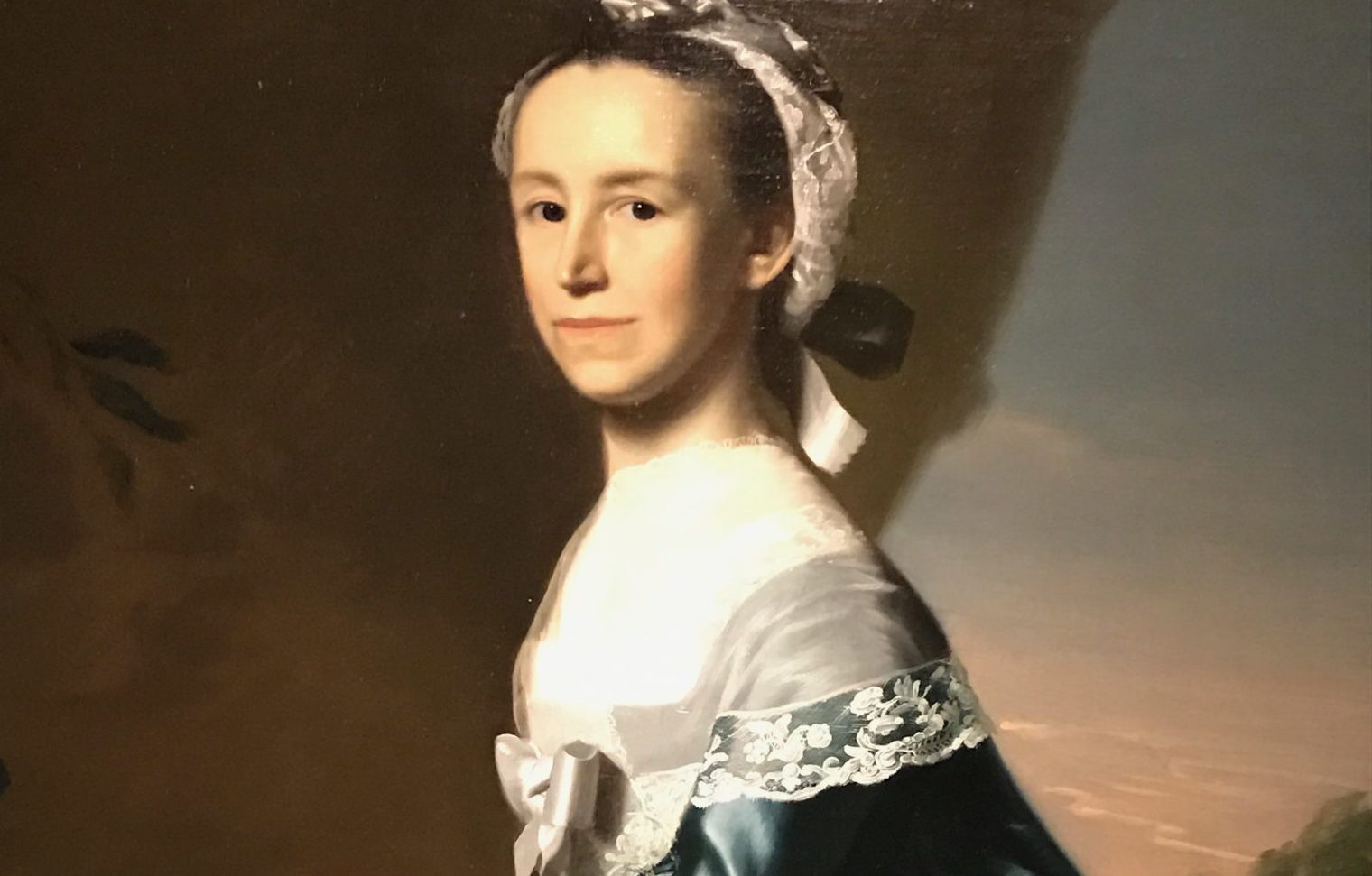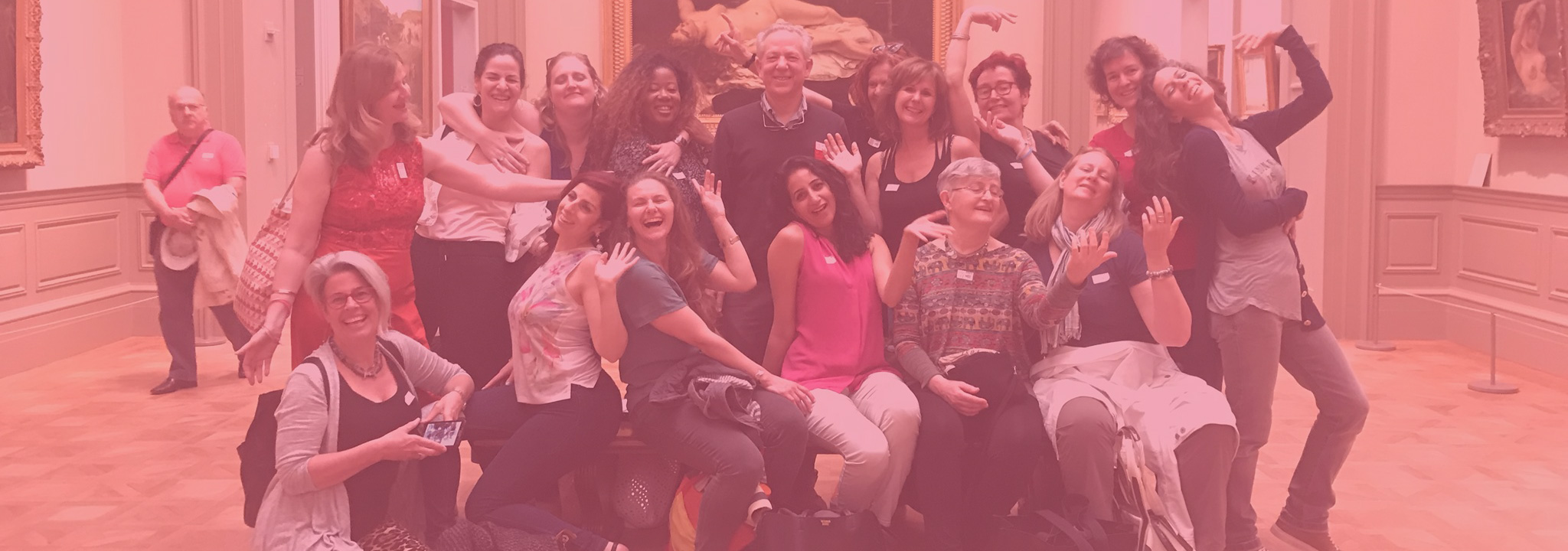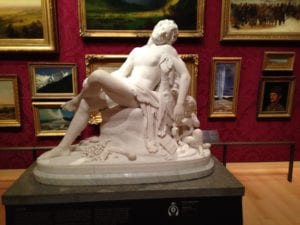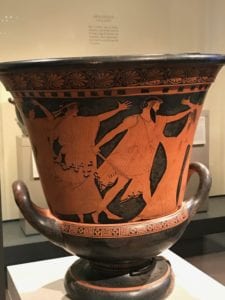
20 Jun Nasty Women of the MFA Boston
The Museum of Fine Arts, Boston is of course one of the world’s great museums. It is also a great place for a women’s history tour. There are very few of the courtesans or mistresses that make up our Shady Ladies tour in New York: I suspect that the Boston collectors of the 19th century were too prudish to buy pictures on themes they knew were racy. But the museum has a great collection of what we’re calling (ironically) “nasty women“—feisty, ambitious women from many periods of history.
As at the Metropolitan, some of the nasty women are women artists. One of these is actually from my home town, Watertown, Massachusetts. Her name was Harriet Goodhue Hosmer. She was a member of a group of American artists in Rome in the 1850s who were probably mostly Lesbians; that is to say that they lived in what are called “Boston marriages,” long term committed female-female pairings that were considered acceptable in the 19th century because society ignored the possibility that they were (almost certainly, among other things) sexual. Whether sexual or not, in any case they represented a big step toward women’s independence, as the women in them established households without men. The best-known work from this group today is the Angel of the Waters on the Bethesda Fountain in Central Park (famous, among other things, for its role in Tony Kushner’s Angels in America), which is by another artist in the group, Emma Stebbins. The group is also known (if it is) because Hawthorne wrote the novel The Marble Faun about them. This work too is a marble faun, though not the one in the title. It has a strong connection to what we would call Hosmer’s feminism. Through the 18th and 19th century, as it became ever more permissible for women to be artists, it was nonetheless controversial (and often forbidden) for them to study from live nude models along with male art students, particularly male models. From my reading of period sources, it seems that Hosmer’s insistence on sculpting male nudes was considered scandalous—and this is her most famous work on that theme.
If we go back 2500 years, we have another great work connected to the nasty women theme. On our Metropolitan Museum Nasty Women tour, we talk about how Greek myth shows that the ancient Greeks were aware that they were oppressing women and were afraid (as the oppressor must always be) that women would get back at them. Their myths/dreams were full of female monsters: the Gorgon, the Furies, the Sirens, and so on. Tragedy is also full of dangerous women; one of the greatest is Clytemnestra, the wife of Agamemnon, overlord of the Greek coalition at Troy, who has an adulterous affair with his estranged (to put it mildly) cousin while he is away and murders him in his bath on his return. This work, which is close in time to Aeschylus’ tragedy on this theme, portrays the scene the same way Aeschylus does: Agamemnon is wrapped in a bathing robe that restricts his movement, while Aegisthus gets ready to plunge his sword into him. And Clytemnestra is specifically implicated in the murder: she carries an axe with which to help her lover murder her husband. This kind of betrayal by a woman of her intimate role in a man’s life must have been a potent fantasy for the Greeks; similarly, Medea murders her children in order to take revenge on her husband.
Another interesting example is our featured image, John Singleton Copley’s portrait of Mercy Otis Warren, wife of James Warren (who was, among other things, paymaster general of the Continental army!). The Warrens were both active and accomplished people: Mercy was a a well-known satirist and playwright and (highly partisan) historian of the American Revolution. Yet as is common, she has chosen to be portrayed as a grand lady in a strikingly elegant silk dress, rather than emphasizing her accomplishments, as a portrait of a man undoubtedly would. Ah well, what woman doesn’t know about this? You always have to hide your light under a bushel….. At the same time, Mercy’s literary accomplishments are pretty amazing for an 18th century American woman.
The first Nasty Women tour of the MFA will be given for a women’s alumnae group later this month. We hope to give them for the public in the future. Keep an eye on our website, and come on the Nasty Women tour of the Metropolitan in the meantime (as well as the Shady Ladies tour!): https://shadyladiestours.com/nasty-women-metropolitan/
https://www.facebook.com/events/674439376084173





